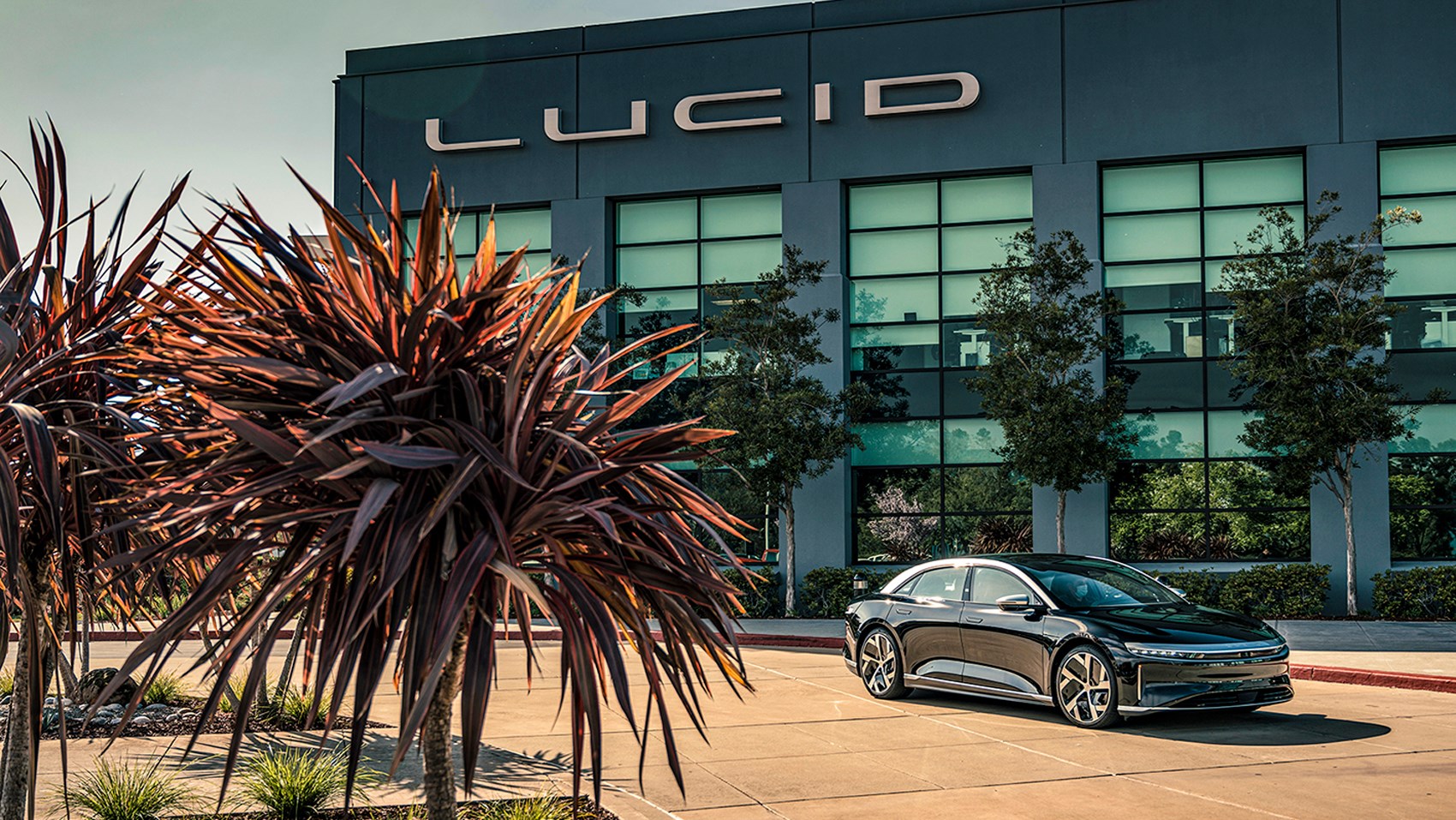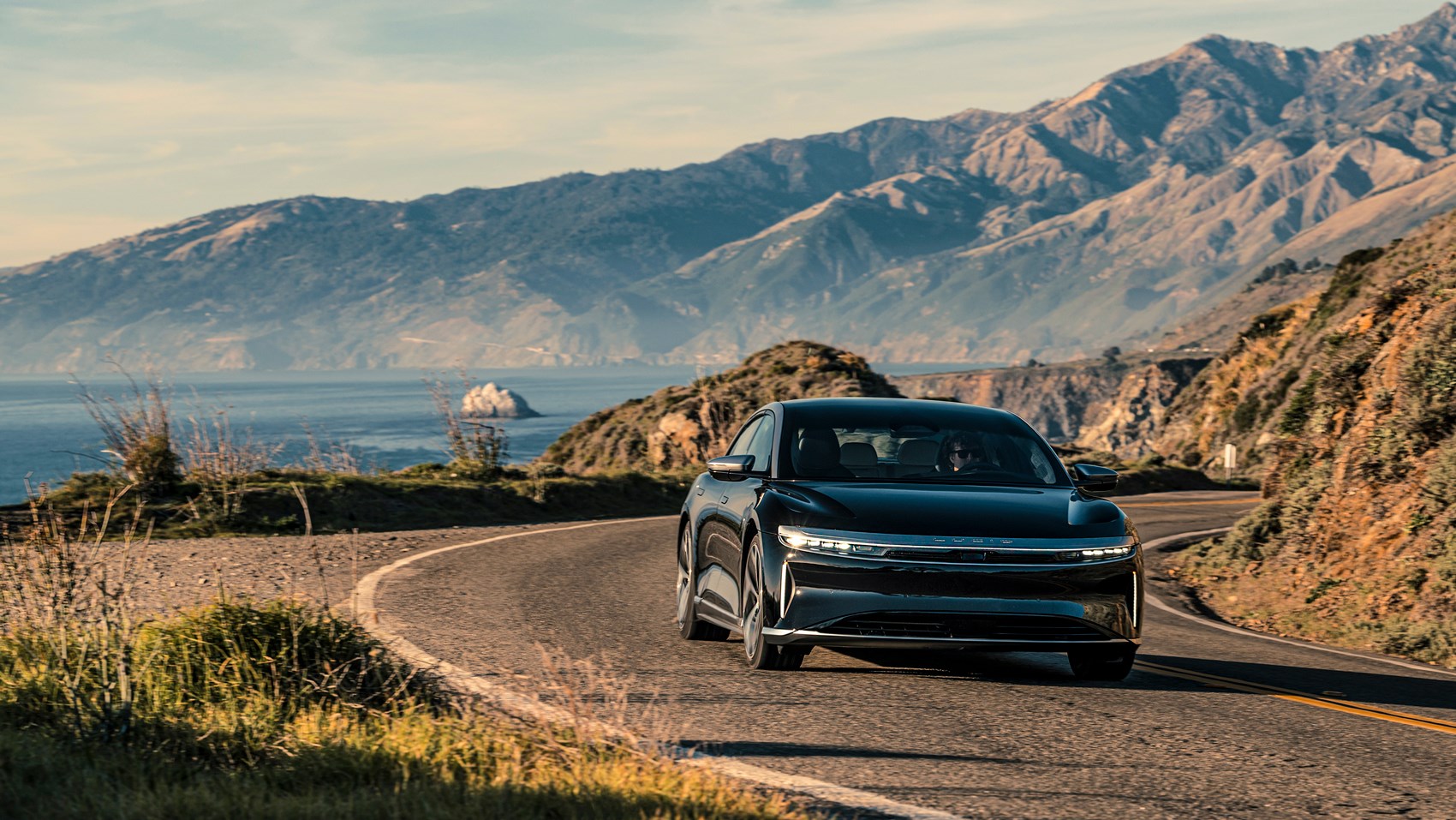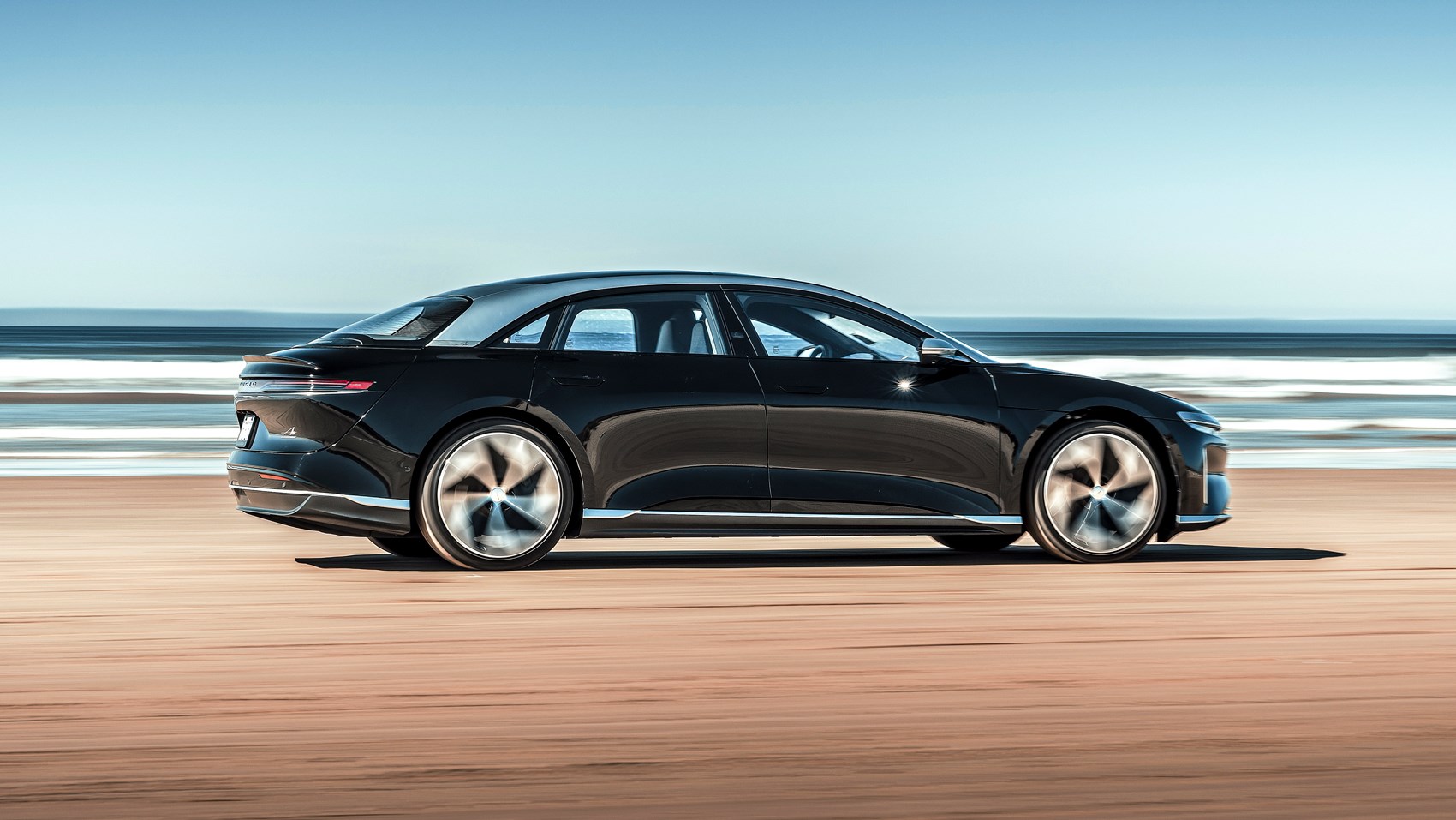► First drive of US start-up’s mega EV
► S-Class space, Tesla pace, futuristic face
► Coming to the UK at the end of 2023
It’s mid-morning in Los Angeles when we first meet the Lucid Air. We’ve just turned out of Lucid’s Beverly Hills customer centre when a Lamborghini Huracan Spyder slows to a halt opposite us. The passenger stretches to poke his smartphone over the windscreen and grab a picture, and the driver gives us a thumbs up.
The Air could out-accelerate the Lamborghini and looks just as striking in its own clean, arrestingly smooth-shaped way. Yet it has the interior space of a Mercedes-Benz S-Class, it’s fully electric and, in the right spec, can travel 500 miles between charges. Some wild claims, sure, and we’re here to find out if the new Lucid Air is more than just a dream.
Between now and the boarding call for our plane home in two days’ time, we need to get this pre-production car back to its home at Lucid HQ in Newark, Silicon Valley. But we don’t plan on taking the direct route.
Hold up – what’s special about the Lucid Air?
What isn’t? Let alone the concept-car looks and interior, there’s the aforementioned huge range combined with equally expansive interior space.
That’s been achieved by a bold engineering approach, and by Lucid committing to creating all its technology in-house: platform, motors and transmission (which in itself is a unique and innovative design), all of the battery elements bar the cells, and much more besides.
Why is it a saloon, not an SUV? Because part of Lucid’s USP is big space inside a small footprint – Audi A8 space inside an A6-sized car, if you like) – and packaging space into an electric SUV is easy (comparatively); it wouldn’t show off the technology to best effect. And an SUV-style vehicle is already in development for Lucid’s second model, under the codename Project Gravity.

It turns heads even in California; everyone wants to ask what it is. Amid the campers, trucks and ATVs we’ll meet shortly on the coast, it looks like a jet-black alien spacecraft. The wheelbase is within a millimetre of the Tesla Model S, and overall length similar, but the Air is a narrower car. It’s a touch longer than a Porsche Taycan but considerably roomier.
Key to the Lucid Air’s space efficiency is its miniaturised drivetrain, with the motor-transmission drive units small enough to fit in a large backpack. In a typically bold move, the company committed to developing the package and the miniaturised drivetrain at the same time, backing itself to achieve both.
The headline 520-mile range is achieved on 19-inch wheels; this car’s on camera-pleasing 21s, which on EPA-headed paper equate to a 481-mile range.
How much is a Lucid Air?
The Air launched in the US with 520 Dream Edition models to celebrate its EPA-rated 520-mile range. All are sold. The car we’re driving is a pre-production model equivalent to a Lucid Air Dream Range, the spec best suited to big miles. Were it the Dream Performance version, it would pack a pleasingly symmetrical 1111hp (or 1096bhp in UK figures). Instead we’re making do with just the 920bhp…
While Dream versions top $100k, the upcoming entry-level single-motor/473bhp Air Pure will dip under $70k with the US EV grant, and the Touring dual-motor version under $100k.
When does it go on sale in the UK?
Left-hand-drive European sales are set to begin before the end of 2022. Lucid has signalled its intent to build UK-ready versions but they’re unlikely to come on stream before 2023.
What’s the Lucid Air’s interior like?
It’s a sunlit cockpit, the windscreen an infinity pool of glass merging into the glass roof (a more conventional screen/header-rail/roof setup will be available on lower-spec Airs).
Displays are split between two surfaces – a compound-curved 5K display for the instrument panel, with a touch-sensitive section, and a lower conventional tablet (which whirs into the dash on request, allowing access to a big cavity for storage behind it).

The touchscreen the ability to swipe music and nav menus from the top curving screen ‘through’ the dashboard to the bigger touchscreen below. In this pre-production car it’s laggy and prone to losing signal. We’re assured customer cars don’t have the same issue.
Necessary over-the-air improvements are coming, too; for example, at the moment it’s not possible to mix and match a map on the top screen with music on the bottom. It’s one potential weak spot in the luxury EV segment in which interfaces are all-important, but Lucid vows it will get slicker with frequent updates. Even if it’s less intuitive to use, the split display set-up is more elegant than Tesla’s stone-like oblong tablet dominating the dashboard.
Come on then, how does it drive?
At a gentle cruise, it’s a zen experience. The ride is relaxing, although there’s an inevitably lumpy edge on the 21s which would doubtless feel all the more noticeable on UK roads. The way it deals with big bumps, however, is astonishing. They’re absorbed beautifully, all the more impressive given the vehicle’s overall 2375kg weight. The suspension is by four-ball-joint double wishbones all round and adaptive dampers; air suspension will be an option in the future.

In search of more exciting roads, we leave LA far behind, trading broad highways for vertiginous canyon roads in the hills above Ojai. It’s here that Lucid CEO (and former engineering chief at Tesla, Lotus and Jaguar) Peter Rawlinson’s seemingly unlikely claim – that the Air can feel luxurious like an S-Class yet handle like a sports car – is proved confoundingly true.
The way this car changes direction is almost Lotus-like. The steering, linear but numb at lower speeds, comes alive up here – direct and with no fight or kickback over bumps. Overall composure at speed is quite something, too: mid-corner bumps pose no threat.
And what speed. The Air feels hypercar-quick out of corners. With big brakes at each corner and oodles of front-axle grip, you’ve confidence on the way into them, too. This car wasn’t designed as a straight-line dragster (although the Performance can hit 0-60mph in 2.4sec) – it’s the way it accelerates above 60mph, and never really lets up, that impresses. And all in near-serenity – other than some slightly intrusive gear whine. (Lucid knows about it; it’s working on a solution.)

There’s enough roll to place the car, then seemingly limitless grip. In Sprint mode – which gives you the option to turn off the stability control, not possible in all EVs – it’s more rapid still yet eminently controllable, despite all that power on tap.
Lucid Air: verdict
There are caveats from our drive: the laggy infotainment, the noticeable gear whine, the brittle edge to the secondary ride (which upcoming middle-ground 20-inch wheels will help). If those niggles can be sorted out – and assuredly they can – then this is a five-star car; in thinking, in approach, in execution and in the way it drives. In terms of hard-point drawbacks, we found visibility past the curved A-pillar tricky in some situations, although intelligent 360 camera displays negate some of that.
There’s much that’s innovative about the Air, and Lucid’s approach as a company, in ways you sense would be more difficult for a ‘legacy’ manufacturer starting without a blank sheet in front of them. The cleverly moulded battery modules; the way the entire front-end assembly is as low as possible, for both style and reduced drag, and incorporates sophisticated cooling and lighting together with gigantic luggage space; its engineering that looks simple because it’s the result of thousands of hours of complex work.
Lucid’s drive-unit tech can be sold to third parties; perhaps in the near-to-medium future we’ll see rapid, space-efficient cars which may be more affordable, if less spectacular than the Air. Creating innovative EVs for mass production as a start-up is famously anything but easy. Lucid had to secure billions of dollars of funding last year alone to stay on track. But the Air is proof positive that it has already created something special.
Everyone we met during our drive, whether it be the Lambo occupants on Rodeo Drive, the surfers at Pismo beach, or the inquisitive VW ID.4 owner at a charging point – it feels like they’ve all had a glimpse of the future. If Lucid’s bold approach pays off, this is the electric car, version 2.0.